VISITA Iglesia is a pious tradition of Filipinos to visit at least seven churches on Maundy Thursday. This popular sacred vow that we fulfill during Holy Week was started by St. Philip Neri in the 16th century. The Spanish friars and missionaries brought such practice to our country.
The number of churches to visit, be it seven or 14, corresponds to the Seven Last Words of Jesus or His Seven Holy Wounds. Some choose to go to 14 churches to match the 14 Stations of the Cross.
In the predominantly Catholic Philippines, there is a myriad of churches that are steeped in historical significance, cultural heritage and architectural value. And Batangas is home to such majestic places that the faithful believe to be miraculous. No wonder the province is a favorite Visita Iglesia destination for many.
National Shrine and Parish of Saint Padre Pio
Commonly known as Padre Pio Shrine, the parish church and pilgrimage site in San Pedro, Santo Tomas is consecrated to the Italian St. Pio of Pietrelcina. Administered by the Roman Catholic Archdiocese of Lipa, the church was designated a national shrine by the Catholic Bishops’ Conference of the Philippines, making it the first in Batangas and in the Calabarzon region.
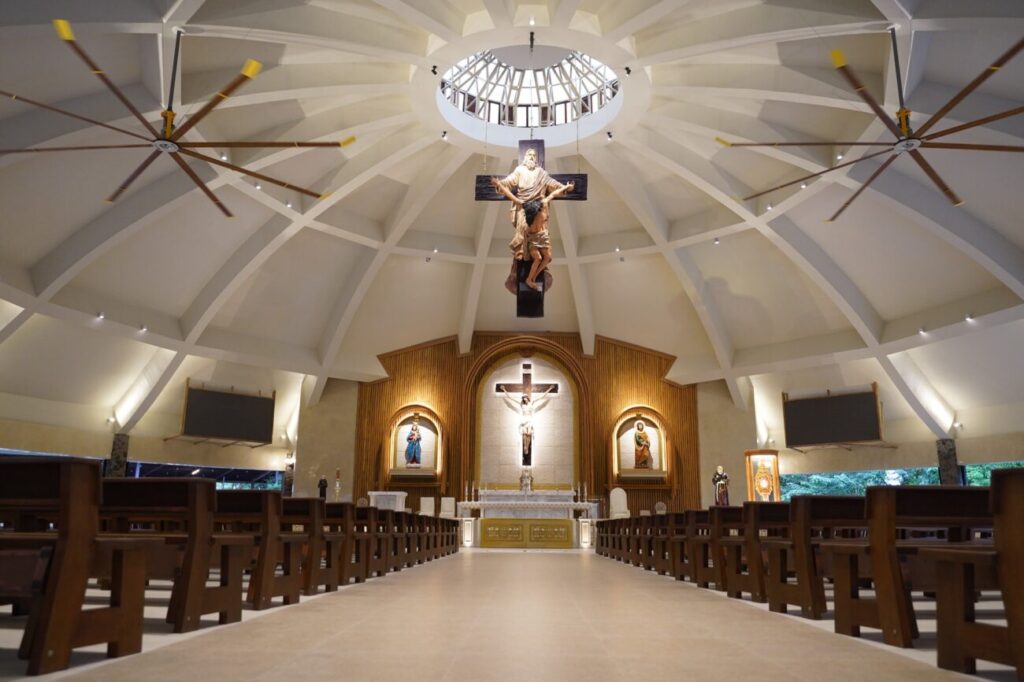
The structure of the main church is made mostly of wood, stone, bamboo, nipa leaves and woven bamboo strips. The shape of its roof resembles a “salakot”, a Filipino hat used by farmers and fishermen as their protection against heat and rain. At the top of the roof stands the image of Our Lady of Mercy. Inside the main church hangs a huge replica of the Glorious Cross derived from the design used for the Archdiocese of Lipa during the Jubilee Year 2000.
Metropolitan Cathedral of Saint Sebastian
The San Sebastian Cathedral or Lipa Cathedral was constructed in the Romanesque tradition. It has a big circular dome, giant walls and columns, balconies and arches. Standing proudly in front of the church is a bell tower, which, like the dome, is decorated with moldings.
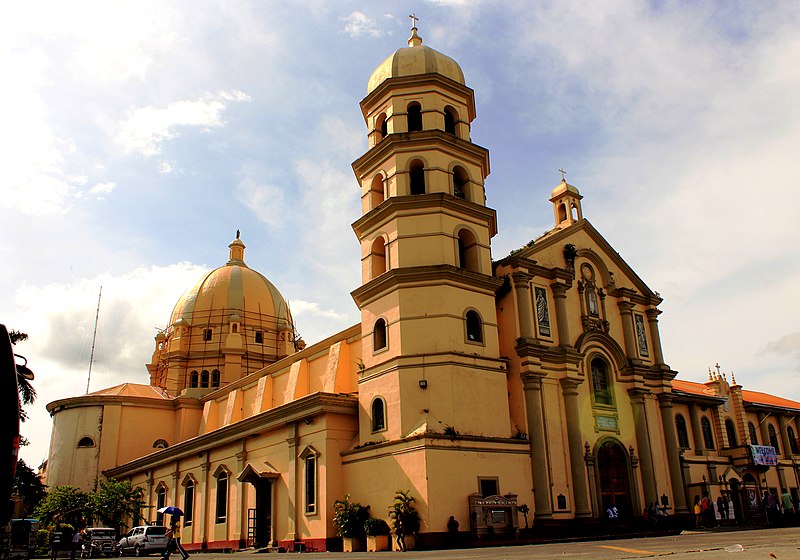
The ceiling of the church, including the pendentives and intrados, is painted with images of saints. In one corner of the main hall is a tableau depicting the Paschal mystery. The main entrance door has 16 carved images portraying the history of salvation up to the Great Jubilee of 2000.
Our Lady of Mt. Carmel Church
The church, located on P. Torres Street, Poblacion, Lipa, is part of the Carmelites convent in the city. Officially called the Monastery of Our Lady of Mt. Carmel of Mary Mediatrix of All Grace, it was founded in 1946.
After two years, it was reported that the Blessed Virgin Mary appeared in front of a nun named Teresita. The Catholic Church declared the apparition fraudulent. Sister Teresita left the monastery and the convent was sealed from the public.
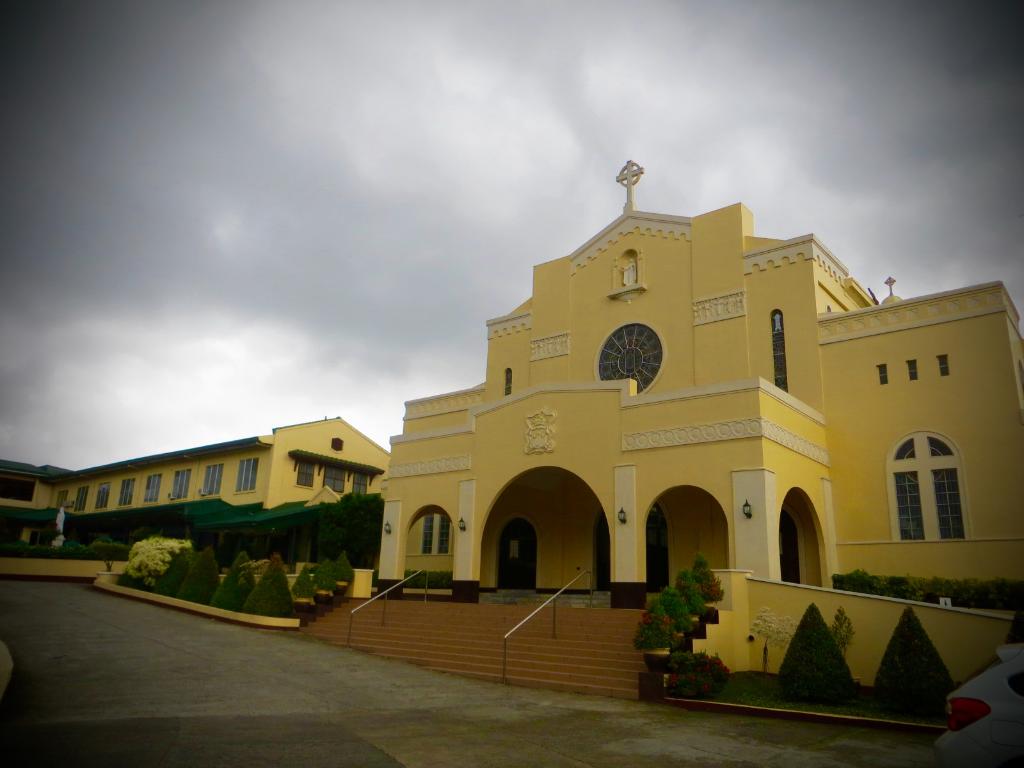
Forty-two years later, a new apparition occurred with the Blessed Virgin supposedly requesting the statue that the Catholic Church ordered destroyed (which the convent hid instead) be displayed inside the chapel again. The request was granted and rose petals allegedly started falling from the sky a few days after. The statue was then reportedly seen to have come to life by six children playing at the convent ground. Whether these stories are true or not, devotees began coming to the church, especially on Sept. 12, feast day of the Blessed Virgin.
History aside, Our Lady of Mt. Carmel looks more like a chapel in size. Its lack of ornamentation and modern design are noticeable. The Carmelite seal is imprinted on the foyer with a lone white statuette of the Virgin Mary and a simple Celtic cross as its companions. Its interior design is as austere as its exterior with its clean white walls. The only accent inside is the light blue ceiling crossed by dark wooden trims. The floors are made of white and gray marble. The altar is capped by an overhead dome.
Minor Basilica of Saint Martin of Tours
The largest Catholic church in Asia, the structure, also known as Taal Basilica, is built on the neo-classical architecture style on a Latin cross layout. The stone church has three naves with a grand transept and an elegant facade with Ionic and Doric orders. A small tower on the left side of the facade contained the large church bell, which was destroyed by an earthquake in 1942.
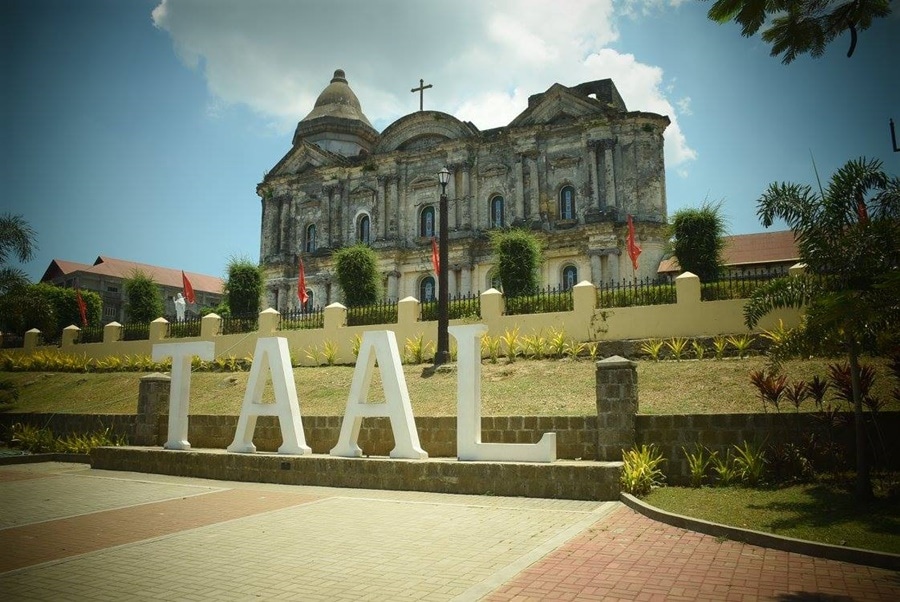
Located on Calle San Martin, Taal, the basilica is 88.6 meters (291 ft) long and 48 meters (157 ft) wide. The facade is 28 meters (92 ft) high, while the cupola is 44.5 meter (146 ft) high. It also has a 15.5-meter (51 ft) nave. Its baptistery is made with tiles imported from Europe.
In 1954, the church was declared a Minor Basilica, and 20 years later, a National Shrine or National Historical Landmark.
Parish Church of Immaculate Conception
Also known as Balayan Church, this National Cultural Treasure is located at Plaza Mabini Street, Balayan. One of the Spanish colonial era churches in the province, the edifice was constructed in 1591 under the directives of the Jesuit Order. The first church was made of wood, bamboo and nipa. But due to the growing number of devotees and frequent damages brought by Mother Nature, a new stone church was built in 1795. It was dedicated in honor of the Immaculate Conception, the patroness of Balayan.
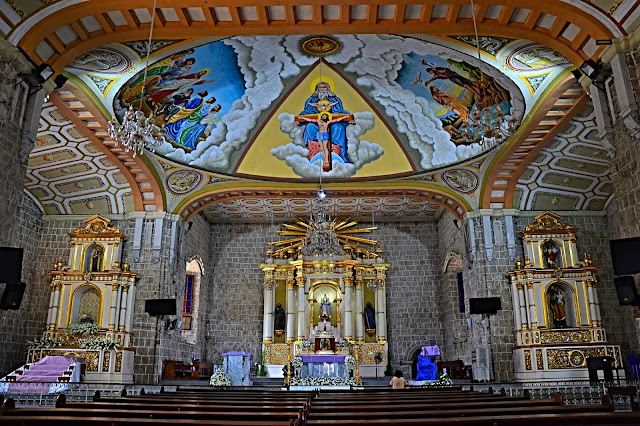
The Baroque-styled and fortresslike Balayan Church features the contrasting hues of the orange brick belfry, gray stone facade and reddish Immaculate Conception College beside the church. The retablos look grand while the ceiling painting above the altar, which represents scenes from the Bible, is impressive.
Archdiocesan Shrine of Our Lady of Caysasay
A coral-hewn chapel in barrio Caysasay in Taal, it was built in 1639 to replace a temporary structure made in 1611 and honor the 17th century image of the Virgin Mary. It was said to have been found by a fisherman while fishing in the Pansipit River in 1603.
The church is home to Our Lady of Caysasay whose feast day is celebrated every Dec. 8. The reef stone edifice’s original coral stone and marble structure still stands to this day, making it one of Taal’s oldest surviving churches.
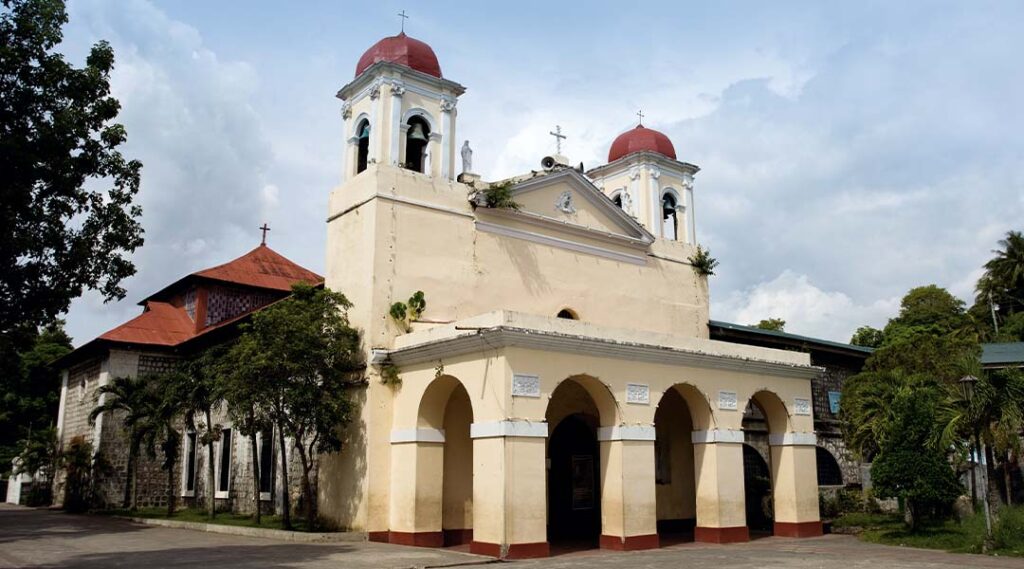
The Hagdan-hagdan or San Lorenzo Ruiz Steps has 125 granite steps from the church which leads up to the town center. An inconspicuous narrow walkway from the steps takes visitors to the spring-fed well (now known as the Miraculous Well of Sta. Lucia) where two women saw the reflection of the Virgin of Caysasay.
Since its discovery, many have attested that spring water has miraculous healing and therapeutic powers. The well is marked by a coral stone arch with a bas-relief image of the Virgin on its facade. It was built in early 1600.
St. Raphael the Archangel Parish Church
This remarkable church, located in Calaca, was established in 1836 by the locals. They gathered sand, stone, wood and adobe from nearby Balayan – traveling via the Pansipit River in small boats. Calaca Church was finally completed in 1861 and dedicated to San Rafael the Archangel, patron of the sick, healers, doctors, travelers and lovers.
Although there are many myths about this church, the most popular is that the Archangel San Rafael himself descended as a small boy and stopped a storm surge that would have destroyed the entire town.
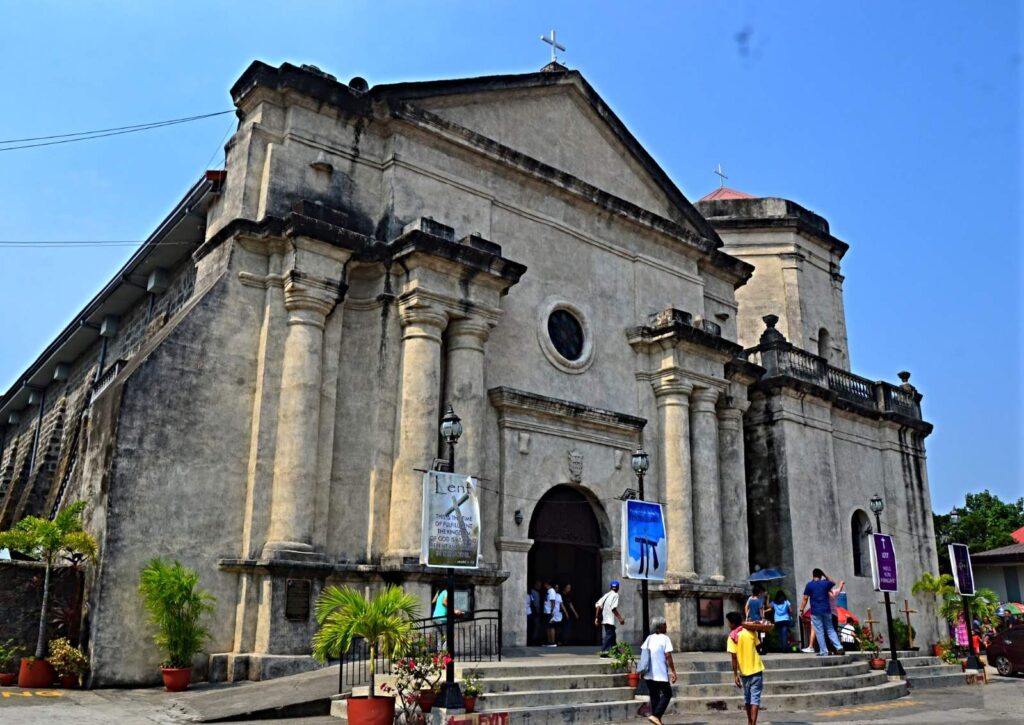
Due to its age, Calaca Church has undergone a great number of restorations over the years. Its interior follows the typical cruciform layout of religious buildings. The domed apse features depictions of the gospel writers Matthew, Mark, Luke and John in oval trompe l’oeil frames on each corner.
The Visita Iglesia is a powerful way to spend time in adoration, meditating on Jesus’ sacrifice of love for the salvation of souls in preparation for the joy of Easter. While saying prayers is the most important reason to visit churches, let us also remind ourselves of the history and heritage of these Batangas edifices that stood the test of natural disasters through the centuries.





